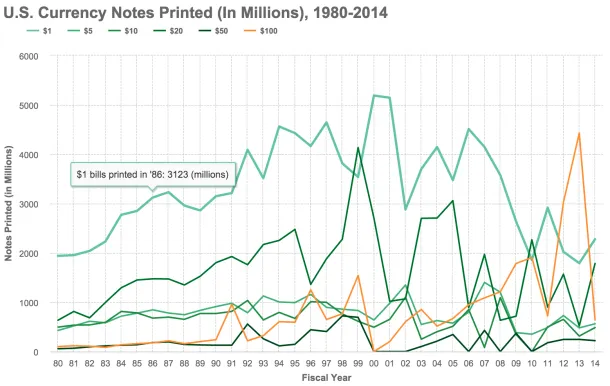
Charting Billions of (Endangered?) $100 Bills

The ubiquitous $100 currency note — the Bill, the C-Note, the Benjamin — might be ready to cash out, at least if a group of influential economists have their way.
In a recent paper, scholars at Harvard University argue that the elimination of the $100 bill, along with other high-value currency notes around the world, could reduce corruption and restrict criminal enterprises.
Their findings even prompted a former U.S. Treasury Secretary, Lawrence Summers, to suggest that governments should stop printing $50 and $100 notes, reports The Wall Street Journal.
“I’d guess the idea of removing existing notes is a step too far. But a moratorium on printing new high-denomination notes would make the world a better place,” Mr. Summers wrote in an item for The Washington Post’s Wonkblog.
As the Journal reports, though, the $100 bill isn't quite spent. About 10 billion of them — roughly $1 trillion in currency — are still circulating through the world economy (though far too few are in my wallet these days).
They've been printed at a steady rate during the last 30 years, according to data released by the U.S. Bureau of Engraving and Printing. And another 1.5 billion have been ordered for the 2016 fiscal year, the agency says.
This chart plots the printing rates of the various U.S. dollar notes since 1980. Note the recent spike in $100 printing during the 2013 fiscal year. That fall the government began issuing a new round of $100 bills with enhanced security features. The printing fell off again last year to reflect the burst in new paper.
See a full-screen version.
Data: U.S. Bureau of Engraving and Printing.
